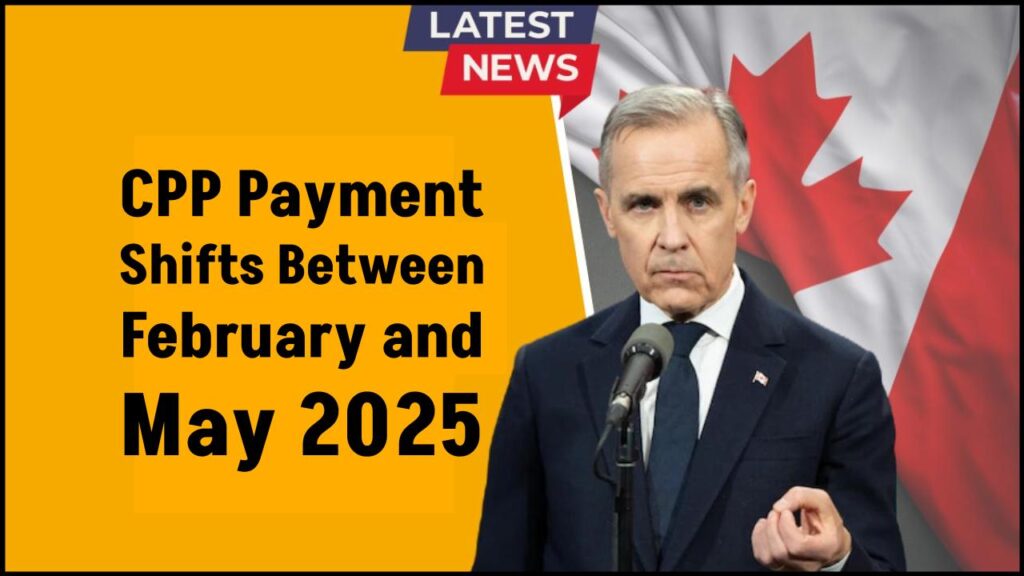CPP Payments Changing Soon: Full Breakdown of What’s Happening Between Feb and May 2025
CPP Payments Changing Soon: Big changes are coming to the Canada Pension Plan (CPP) between February and May 2025.
If you’re a Canadian worker, retiree, or self-employed professional, it’s crucial to understand how these updates might impact your income. In this guide, we’ll walk through everything you need to know — in clear, simple language — while providing expert insights, practical advice, and official resources you can trust.
Between February and May 2025, CPP payments are seeing significant enhancements aimed at improving retirement income security for Canadians. These updates are part of a multi-year strategy to strengthen the plan and offer greater financial stability for future retirees.

CPP Payments Changing Soon
| Feature | Details | Source |
|---|---|---|
| Maximum Retirement Pension (Age 65) | $1,433 per month (up from $1,364.60 in 2024) | Canada.ca |
| Contribution Rate (Employees/Employers) | 5.95% up to $71,300 | Canada.ca |
| New Earnings Tier (YAMPE) | $71,300 – $81,200 at an extra 4% contribution | Canada.ca |
| CPP Disability Benefit | Up to $1,673.24 monthly | Canada.ca |
| Next Payment Dates | Feb 26, Mar 27, Apr 28, May 28, 2025 | MoneyGenius.ca |
The CPP changes taking place between February and May 2025 mark an important step toward a more secure retirement for Canadians. With higher payments, new contribution rules, and enhanced benefits, the Canada Pension Plan continues to evolve to meet the needs of workers and retirees.
By understanding these updates and adjusting your retirement planning accordingly, you can maximize your CPP benefits and enjoy greater financial security. For complete details, always refer to the official Government of Canada CPP Resource.
Understanding the CPP Changes in 2025
Higher CPP Payments for Retirees
The maximum CPP retirement pension at age 65 is now $1,433 per month, compared to $1,364.60 in 2024.
This increase results from the CPP Enhancement initiative, designed to boost the income replacement level from 25% to 33.33% of your average lifetime earnings. In simple terms: if you contribute more now, you receive more income later.
New Contribution Rates and Earnings Limits
Starting in 2025, employees and employers will each contribute 5.95% on earnings up to $71,300 (Year’s Maximum Pensionable Earnings, YMPE).
A new earnings tier, the Year’s Additional Maximum Pensionable Earnings (YAMPE), has been introduced, covering income between $71,300 and $81,200 with an additional 4% contribution rate.
Self-employed individuals must contribute both portions: 11.9% up to $71,300 and 8% between $71,300 and $81,200.
Boost to Other CPP Benefits
The enhancement also affects other CPP benefits:
- Disability Benefit: Maximum monthly amount of $1,673.24
- Survivor’s Pension:
- Under age 65: up to $770.88
- Age 65 and over: up to $859.80
- Combined Survivor’s and Retirement Pension: Up to $1,449.53
CPP Payment Dates (February–May 2025)
- February 26, 2025
- March 27, 2025
- April 28, 2025
- May 28, 2025
Payments are typically made on the third-to-last business day of each month.
CPP Payments Changing Soon: How to Maximize Your CPP Benefits?
Delay Taking CPP if You Can
For every month you delay starting CPP after age 65, your benefit increases by 0.7%. Waiting until age 70 could boost your payments by up to 42%.
Maximize Your Contributions
Aim to contribute the maximum every year to increase your eventual retirement benefit. This strategy pays off significantly over the long term.
Check Your Contributions Regularly
Use your My Service Canada Account to review your Statement of Contributions. Ensuring accuracy now prevents surprises later.
Understand the Post-Retirement Benefit (PRB)
If you continue working while receiving CPP after 60, you can qualify for additional monthly payments through the Post-Retirement Benefit.
Coordinate with Other Income Sources
CPP is just one pillar of retirement income. Make sure to consider Old Age Security (OAS), workplace pensions, and private savings in your overall strategy.
FAQs on CPP Payments Changing Soon
1. How much CPP will I receive if I retire at 60?
If you start CPP at 60, your payment is reduced by 0.6% for every month you receive it before turning 65, which is a 36% reduction overall.
2. Is CPP income taxable?
Yes, CPP payments are considered taxable income and must be reported on your income tax return.
3. Can I work while receiving CPP?
Yes, you can work while receiving CPP. If you are under 70, you must continue contributing, which could increase your benefit through the Post-Retirement Benefit.
4. How do I apply for CPP benefits?
You can apply online through your My Service Canada Account, by mail, or in person at a Service Canada Centre.
5. Will I still receive CPP if I move abroad?
Yes, CPP benefits can be paid while living outside Canada, though tax treaties and banking processes may vary depending on the country.








